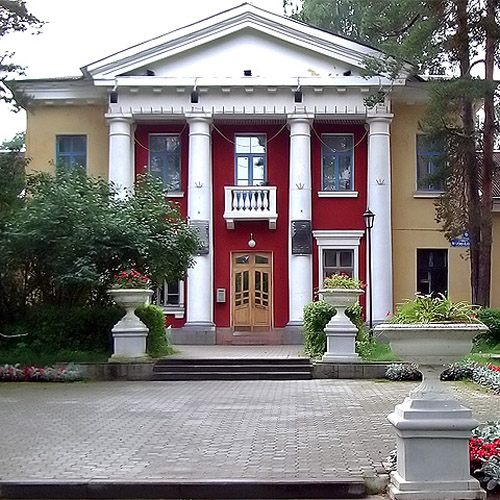தூப்னியம்
105
Db
நெடுங்குழு
5
கிடை வரிசை
7
குழு
d
புரோத்திரன்கள்
இலத்திரன்கள்
நியூத்திரன்கள்
105
105
157
பொதுப் பண்புகள்
அணு எண்
105
அணுவின் திணிவு
[268]
திணிவு எண்
262
தனிம வகை
தாண்டல் உலோகங்கள்
நிறம்
பொருந்தாது / இல்லை
கதிர்ப்பு
ஆம்
Named after the Russian town of Dubna
படிக அமைப்பு
பொருந்தாது / இல்லை
வரலாறு
Dubnium was reportedly first discovered in 1968 at the Joint Institute for Nuclear Research at Dubna.
Researchers there bombarded an americium-243 target with neon-22 ions.
In the same year, a team led by Albert Ghiorso working at the University of California, Berkeley conclusively synthesized the element by bombarding a californium-249 target with nitrogen-15 ions.
Researchers there bombarded an americium-243 target with neon-22 ions.
In the same year, a team led by Albert Ghiorso working at the University of California, Berkeley conclusively synthesized the element by bombarding a californium-249 target with nitrogen-15 ions.
ஓட்டில் உள்ள இலத்திரன்கள்
2, 8, 18, 32, 32, 11, 2
எதிர்மின்னி அமைப்பு
[Rn] 5f14 6d3 7s2
The Berkeley team proposed the name hahnium for the element
இயற்பியற் பண்புகள்
நிலை
திண்மம்
அடர்த்தி
39 கி.கி/மீ3
உருகுநிலை
-
கொதிநிலை
-
உருகலின் வெப்ப ஆற்றல்
பொருந்தாது / இல்லை கி.யூல்/மோல்
வளிமமாக்கலின் வெப்ப ஆற்றல்
பொருந்தாது / இல்லை கி.யூல்/மோல்
தன்வெப்பக் கொள்ளளவு
- J/g·K
புவி மேலோட்டத்தில் செறிவு
பொருந்தாது / இல்லை
பிரபஞ்சத்தில் செறிவு
பொருந்தாது / இல்லை

படத்திற்கான பங்களிப்புக்கள்: Wikimedia Commons (Hrustov)
The element is named after after the Russian town of Dubna, the location of the Joint Institute for Nuclear Research
CAS எண்
53850-35-4
PubChem CID எண்
பொருந்தாது / இல்லை
அணுப் பண்புகள்
அணுவாரை
-
பங்கீட்டு ஆரை
149 pm
மின்னெதிர்த்தன்மை
-
அயனாக்கல் சக்தி
-
அணுவின் கனவளவு
-
வெப்ப கடத்துத் திறன்
0.58 W/செ.மீ·K
ஒக்சியேற்ற நிலைகள்
5
பயன்கள்
Dubnium is used for scientific research purposes only.
Dubnium is harmful due to its radioactivity
சமதானிகள்
நிலையான சமதானிகள்
-நிலையற்ற சமதானிகள்
255Db, 256Db, 257Db, 258Db, 259Db, 260Db, 261Db, 262Db, 263Db, 264Db, 265Db, 266Db, 267Db, 268Db, 269Db, 270Db